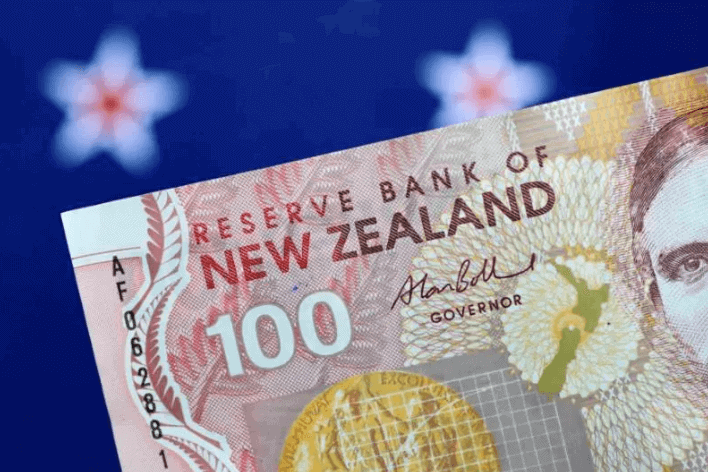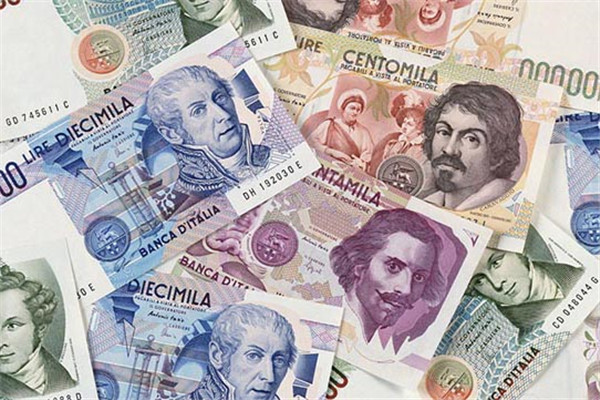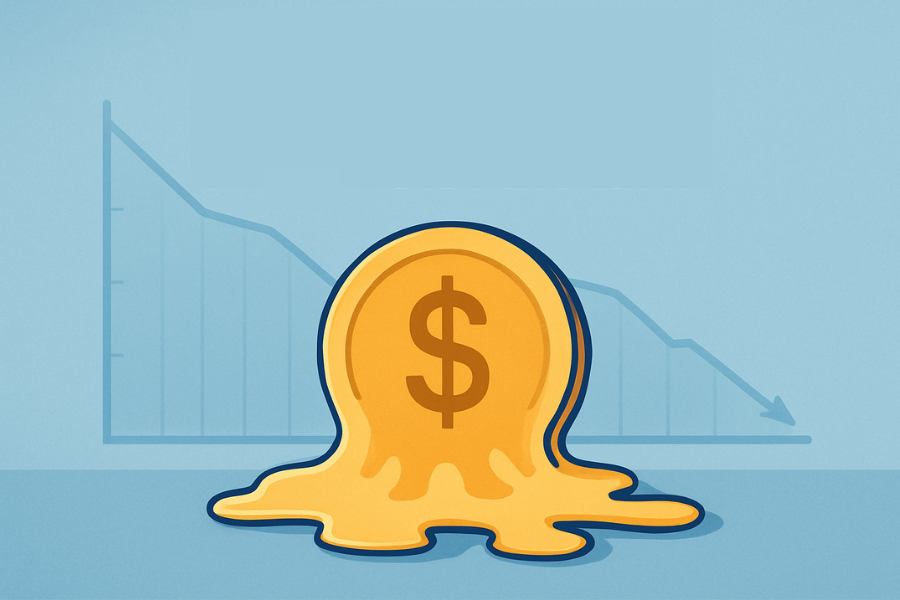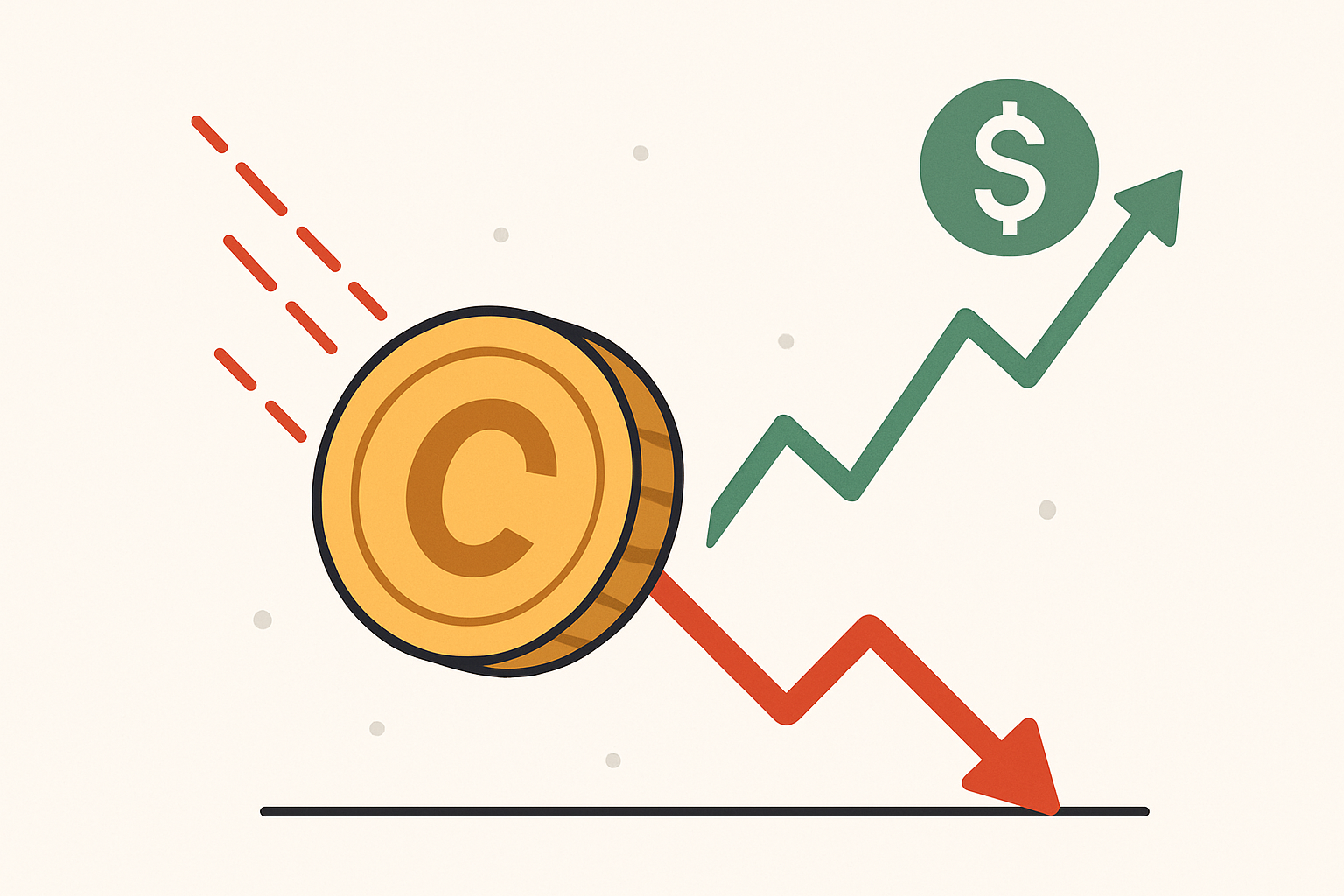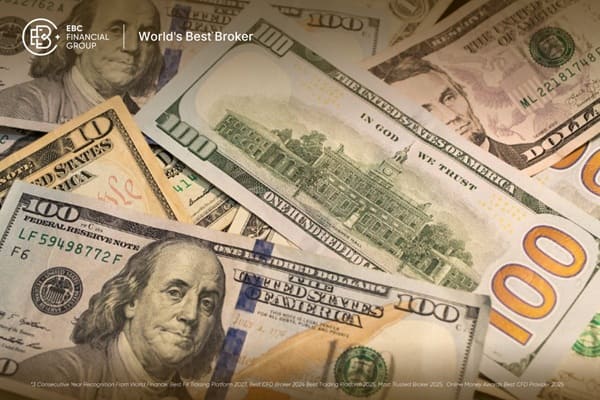A taxa de câmbio flutuante é um sistema de gestão cambial adotado por um país ou região em que a taxa de câmbio em relação a outras moedas é determinada pela oferta e demanda do mercado e pela força do mercado cambial, permitindo que a taxa de câmbio flutue livremente dentro de um determinado intervalo. Em comparação com o sistema de taxas de câmbio fixas, sob a taxa de câmbio flutuante, a taxa de câmbio pode flutuar com mudanças na demanda e oferta do mercado, refletindo diferentes fatores econômicos e influências políticas.
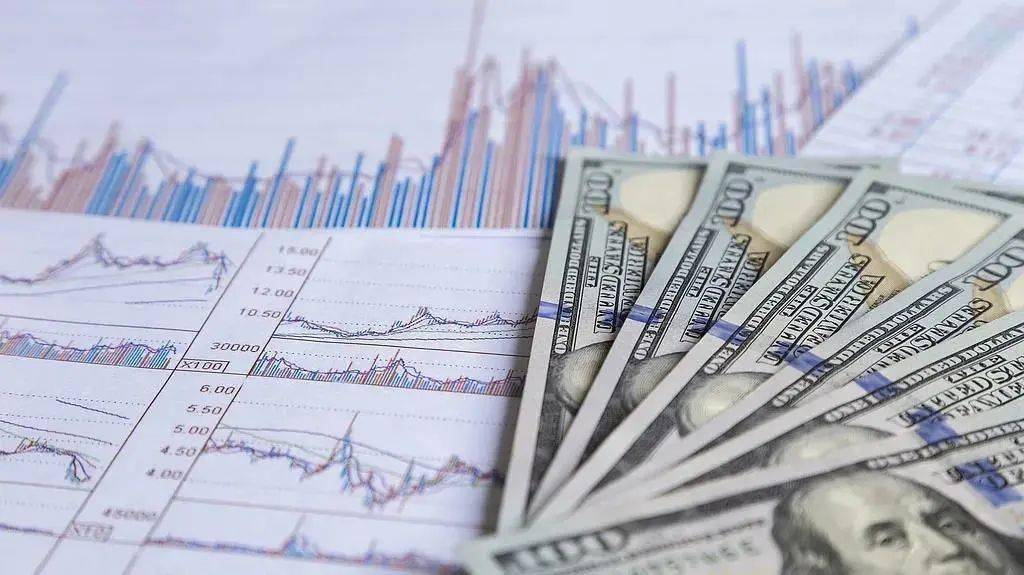
A taxa de câmbio flutuante significa que o país não regula o intervalo de flutuação da taxa de câmbio, mas permite que ela flutue livremente de acordo com a oferta e demanda do mercado cambial. Após a Primeira Guerra Mundial, as moedas dos principais países do mundo romperam com o sistema padrão ouro e implementaram um regime de taxa de câmbio flutuante de curto prazo.
Após o colapso do sistema de Bretton Woods em 1973. os países de todo o mundo implementaram geralmente taxas de câmbio flutuantes, que podem ser divididas em flutuação livre e flutuação gerida.
A flutuação livre também é chamada de flutuação limpa, o que significa que um governo não toma nenhuma medida para impedir a intervenção monetária e permite completamente a flutuação livre.
A flutuação controlada também é chamada de flutuação suja, ou seja, o regime cambial em que o governo intervém em determinadas circunstâncias para manter a sua taxa de câmbio relativamente estável e evitar flutuações excessivas.
As taxas de câmbio flutuantes actualmente implementadas pela maioria dos países são geridas.
Da perspectiva da flutuação, a taxa de câmbio flutuante pode ser dividida em três categorias: política flutuante única, flutuante conjunta e política de indexação.
Uma flutuação única refere-se à situação em que a moeda nacional não tem uma relação de preço fixo com qualquer moeda estrangeira e flutua separadamente de acordo com a oferta e a procura no mercado cambial, com o dólar americano, o iene japonês e outras moedas flutuando separadamente.
Flutuação conjunta refere-se à adoção de taxas de câmbio fixas entre moedas dentro de um grupo de países, estabelecendo os limites superiores e inferiores para as flutuações das taxas de câmbio, e a obrigação das autoridades monetárias de cada país de manter uma taxa de câmbio fixa para as moedas dentro do grupo ao mesmo tempo que permite que outras moedas fora dos países membros flutuem livremente.
Os estados membros da Comunidade Económica Europeia adoptam o método de flutuação conjunta.
A implementação da política de indexação refere-se a um regime de taxa de câmbio flutuante que fixa uma moeda principal, um direito de saque especial ou uma unidade monetária europeia, fixa a sua taxa de câmbio e flutua outras moedas de acordo com a flutuação das moedas principais.
Actualmente, muitos países em desenvolvimento adoptaram uma política indexada. Adicionalmente, existe um regime cambial ajustado de acordo com um conjunto de indicadores.
Ao abrigo da taxa de câmbio flutuante, a oferta e a procura do mercado determinam a alteração da taxa de câmbio, o que significa que a taxa de câmbio flutuará de acordo com as transacções no mercado cambial e a procura de dinheiro pelos investidores e a procura de riscos de cobertura. Se o crescimento económico de um país for forte e os fluxos de capital aumentarem, isso levará à valorização da moeda do país. Pelo contrário, se a economia de um país enfrentar dificuldades e a saída de capitais aumentar, isso levará à desvalorização da moeda do país.
A vantagem da taxa de câmbio flutuante é que ela pode ajustar automaticamente a taxa de câmbio para responder às mudanças no ambiente económico. Pode ajudar os países a manter a competitividade sob choques externos e a reduzir a dependência das reservas cambiais. Além disso, a taxa de câmbio flutuante também pode fornecer sinais de mercado, refletindo a saúde da economia e as expectativas do mercado.
No entanto, a taxa de câmbio flutuante também apresenta alguns desafios e riscos. Ovolatilidade das taxas de câmbio pode desencadear comportamento especulativo e de mercadoinstabilidade, que pode ter efeitos adversos nas empresas e na economia. EmAlém disso, a taxa de câmbio flutuante pode levar a incertezas sobre a inflação,comércio internacional e investimento.
Em uma palavra, a taxa de câmbio flutuante é uma gestão cambialsistema, e sua taxa de câmbio em relação a outras moedas é determinada poroferta e demanda do mercado e forças de mercado cambial. Podeajustar automaticamente as taxas de câmbio para refletir mudanças na economiaambiente, mas também enfrenta alguns desafios e riscos.












